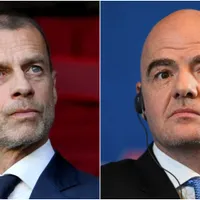Luciano Spalletti has high expectations for Italy at Euro 2024. That promises to be a thrilling spectacle, primarily because most of the squad is experiencing their first time playing together. While this unique situation poses some challenges with finding cohesion on the field, it also presents an exciting advantage of unpredictability that could work in their favor. This unpredictability will be especially evident in their second match against Spain, adding a layer of intrigue to the tournament.
Italy’s training camp concludes with a 1-0 victory against Bosnia and Herzegovina on Sunday at Carlo Castellani Stadium in Empoli. The small town where Spalletti ended his professional playing career and began his managerial career. “I spent all my childhood in Empoli,” Spalletti said. “I coached the youth teams, the first teams, and all the divisions.”
Empoli homecoming: Training camp finale
During the tune-up match, the Italian boss tested a 3-4-2-1, giving some lesser-known players a chance to shine. It is an exciting experiment for punditocracy, as they witness which players Spalletti could use as substitutes in certain positions. The rest of the team could be considered second-string, except for Gianluigi Donnarumma, who made crucial saves, Jorginho, who controlled the midfield, and Federico Chiesa, who provided the assist for Davide Frattesi’s stunning goal. However, it was the first time we saw Spalletti use ‘attacking midfielders’ together.
Born and raised in Rome, Frattesi showed his prowess as a ‘second forward.’ Frattesi’s brilliant one-touch volley from a Chiesa cross is commendable. Nevertheless, it came after three missed opportunities. The upcoming Euro 2024 tournament may not be as lenient, mainly when players hesitate with the ball for too long.
Friendlies and vulnerabilities
Italy’s positioning on the field during their two Friendlies appeared intentionally inconsistent. Jorginho, in his role as a defensive midfielder, demonstrated his ability to adapt. However, Giovanni Di Lorenzo’s frequent ventures into attacking positions while displaying his offensive prowess also left him vulnerable and often required Jorginho to cover for him. Nevertheless, the Arsenal midfielder does an incredible job of predicting which player to trail, showcasing his ability to read the field. Consequently, Italy’s inconsistent positioning could confuse its opponents, leading to defensive vulnerabilities or a lack of offensive structure for Albania or Croatia.
“If our formation is too stretched, it is more difficult to dictate the play.” Luciano Spalletti said. “We must decide where we want to keep possession on the field.”
Italy uses endless possibilities, purposely presenting contrarian and unexpected declarations. Under Spalletti’s system, players are given the freedom to perform. They have the flexibility to move around and cover for their teammates, creating an adaptable playing style. This strategic malleability is a testament to Spalletti’s innovative approach and intrigues the audience about the team’s next move.
Formation shifts for Italy under Spalletti at Euro 2024
For example, in a friendly match against Bosnia and Herzegovina, Donnarumma was actively involved in the backline, causing the formation to shift into a 4-2-5. For instance, when Matteo Darmian moves up into the midfield, Jorginho seamlessly fills his spot at right back. The switch permits the wingbacks to move up and down the pitch. Moreover, Alessandro Bastoni delivered crosses from the left flank during the training camp, proving that a center-back can play a winger in Spalletti’s morphed system. In addition, Alessandro Buongiorno, playing in the center-back position but acting as an attacking midfielder, made a chip pass to Gianluca Scamacca. The play resulted in a powerful shot inside the 18-yard line that almost scored. In essence, Italy employs the entire spectrum, intentionally presenting players in unpredictable positions.
To rest or play
One consideration for the upcoming match against Albania is whether Nicolo Barella should play. If he needs more time to recover from a muscle strain, it may be wise to rest him and save him for the stricter game against Spain. Instead, Frattesi could fill his role. This strategic decision could be part of Spalletti’s plan to rotate the squad and keep key players fresh for the more challenging matches.
Notably, when Italy played against Ghana in the opening match of World Cup 2006, Alessandro Del Piero was on the bench and substituted for Francesco Totti. This shows that not even a top attacker like Del Piero was immune to being managed by coach Marcello Lippi. Its reverse occurred between Italy vs. Australia in the Round of 16: Totti came in for Del Piero and scored the winning penalty kick during stoppage time. Del Piero did not even start in the final match against France. He came in as a substitute again for Totti.
False 9: Totti’s role in Spalletti’s system
After securing a spot for Udinese in the UEFA Champions League in 2005, Luciano Spalletti, known for his innovative style, became Roma’s coach. The Giallorossi had fallen apart after winning the Scudetto in 2001. Spalletti, the tactician, experimented with a ‘False 9’ role for Totti in a 4-2-3-1 formation. Totti would play as the lone striker but drop deep into the midfield, causing opposing defenders to chase after him and open space for wingers to attack in the final third. This transformed the pseudo-system into a 4-2-4-0 or a 4-6-0-0. The strategy was successful; Roma climbed the ranks, and the following year, Spalletti became ‘Coach of the Year.”
In 2007, he defeated Roberto Mancini’s Inter Milan and became Roma’s Coppa Italia champions. Not to mention qualifying for the UEFA Champions League.
For example, Spalletti could have no reservations about keeping Barella out of the starting lineup. The same principle applies to Gianluca Scamacca. Frequently, coaches need a resurgence from a backup weapon on the bench. If a starting Mateo Retegui cannot find the net, Scamacca can play hero as a center forward; the No. 9 can be optimized as a 65th-minute substitute.
Controversial exclusion
Moreover, when Spalletti returned to Roma in 2016, Totti faced controversy after publicly criticizing Spalletti for his lack of playing time due to recovering from injury. Spalletti rebutted by not including the Roma legend on the roster during a blowout win against Palermo. After that, Totti was utilized as a substitute for several games. The exclusion resulted in a heated outcry among fanatics and punditocracy. Ultimately, Spalletti’s disciplined coaching led Roma into the Champions League twice. At the end of 2017, both Totti and Spalletti left Stadio Olimpico.
Flash forward to 2022, Spalletti wins the Scudetto at Napoli. The Italian maestro relied on creating space in the opposition’s defense rather than following a set system. He strategically drags opponents out of position to create space for midfielders to make runs through loopholes.
Subsequently, it leads to ‘give & go’ opportunities through accurate ‘one-touch’ passes. By concocting gaps, any player could capitalize. Regardless, for the Azzurri to improve as comrades, the maestro’s wish must become its player’s demand.
PHOTOS: IMAGO















